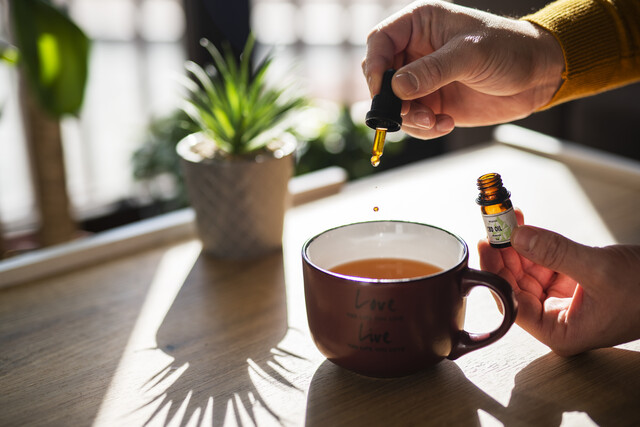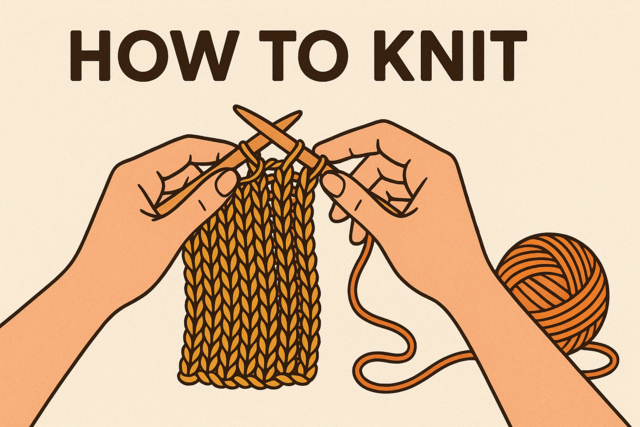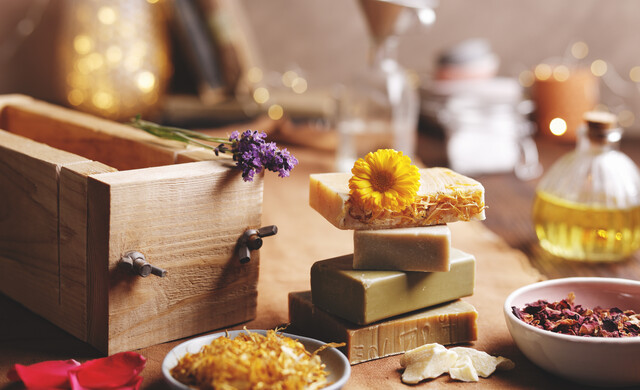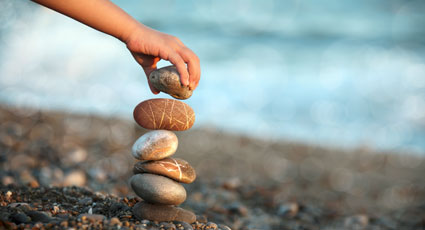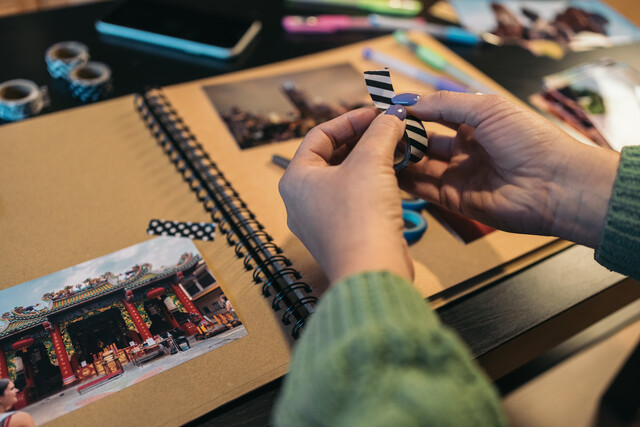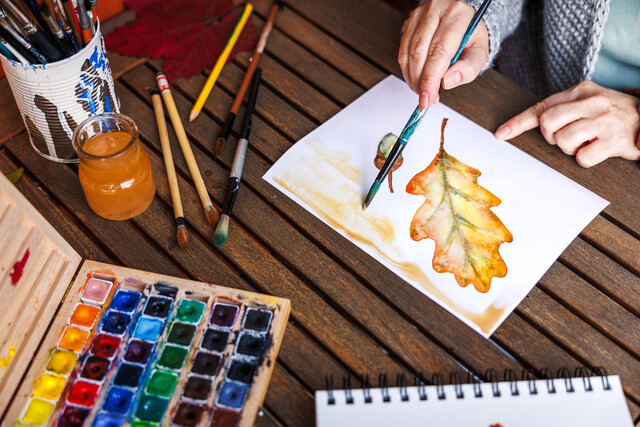Cuttings
Time to meet your neighborhood gardener. Look for the neighbor who has the best looking garden on the street and approach him or her. Most gardeners are very ready to give helpful advice, and most are also willing to allow a new gardener to take cuttings from already established plants. The best reason for taking cuttings from your neighbor's yard is simple. If it grows in your neighbor's yard, it will very likely grow in your yard. Just pay attention to the plant's light and watering needs; the hardiness zone issue has already been addressed.
Taking cuttings is one of the oldest and easiest methods of creating new plants. This is an asexual propagation method. This involves merely cutting a leaf or stem from an existing plant. Cuttings are classified as softwood, semi-hardwood, or hardwood cuttings. These terms refer to the age or maturity of the wood of the parent plant.
Softwood cuttings are taken in spring through the summer, during a plant's active growth season. The cuttings need to be taken from soft growth where the plant stores water; this can be in thick, fleshy leaves, or from new-growth stems.
Semi-hardwood cuttings are taken after the active growing season is over and before the plant becomes dormant.
Both types of cuttings are done the same way.
� Potting soil. 1:1 sand and peat moss or 1:1 vermiculite and peat moss.
� Sterile pots. Several plants can be rooted in a larger pot, to be transplanted later.
� Rooting Hormone Powder. Is found at a Nursery or Home and Garden Center.
� Sharp scissors or pruning shears.
Fill the sterile pots with the potting soil of choice, pre-moistened, to within one inch of the top rim. Clip the softwood or semi-hardwood cutting about five to six inches long just below a leaf; then half of the leaves are stripped off, dip the cut and stripped end into the rooting hormone and secure in the potting soil. After the pot is full of cuttings planted about one inch apart, water thoroughly.
Keep your new cuttings out of direct sunlight. The plastic or glass will work as a magnifying glass and concentrate the sun, burning your new cuttings before they are able to root. When you see new growth formation of your cuttings, the roots have likely formed and the cuttings are ready to be transplanted into individual pots.
Again, use new or sterile pots, filled with pre-moistened potting soil. Gently use a pencil or a twig to help work the roots loose from one another, lift each rooted cutting and immediately plant them one by one. Do not lift all the cuttings at one time and allow the roots to be exposed to the air more than a few seconds. Once the cuttings have been repotted, move them to a place where they will receive filtered sunlight, but no direct sunlight yet. Once the newly transplanted cuttings continue to thrive, then you can move them to the place in your garden you wish them to grow.
Hardwood cuttings are the hardest to root and should not be attempted by beginners. These cuttings are rooted from late fall through early spring, during the plant's dormant season. To do this successfully, the gardener must have a cool, but not freezing, place to store the cuttings as they prepare to take root. Once you have successfully rooted softwood and semi-hardwood cuttings, then you may try for the hardwood cutting methods.
Seeds
Growing plants from seeds is a form of sexual reproduction, or propagation. It is one of the easiest methods of growing plants, after all, Mother Nature plants seeds quite naturally and with very good success. Just ask anyone with a lawn stippled with bright yellow dandelions! Each seed is carried by the wind like a tiny parachute, lands in the lawn where adequate sunlight and water ensures a new plant will grow. Most homeowners do not like a lawn studded with dandelions, but it IS proof that scattering seed is a viable planting method.
The most important element in this endeavor is a prepared seedbed. Never, EVER plant anything in unprepared soil. It may work, but more likely, the seed will never take root, or it will live for a short time before dying.
Seeding a lawn or an area of wildflowers is done in a very similar manner. On the prepared seedbed, scatter the seeds either by hand or with a broadcaster, a hand held bin with a turning wheel operated by hand that scatters seed in a regulated manner. Once you have scattered enough seed for the area you can cast a light covering of peat moss over the exposed seeds and then water. Keep the newly seeded seedbed moist until the seeds begin to sprout. Do not drown them, but remember that they must have adequate moisture to sprout.
This method can be used for a large area, such as a lawn or wildflower garden, or for a very small area with tiny, tiny seeds, such as carrot or lettuce seeds. Once your vegetables have sprouted, you will then need to thin the plants so that they have adequate room to grow. Recommended distance between plants is printed on the back of every seed packet.
Collect seeds. Carry a homemade seed collection kit in your car or purse, snack size baggies, some sticky pieces from stamps or stickers, a felt tipped label pen. Many people with gardens will be happy to have you deadhead flowers for seeds (but ask, of course). You can also collect seeds on a nature walk or hike, in a park, or somewhere interesting where you are vacationing.
A few supplies are necessary.
- Vermiculite.
- Seeds.
- Starter cups (from margarine or dip mixes with four holes cut in the bottom for drainage).
- Plastic starter packs (new or saved and sterilized from previous plantings).
- Planting mix.
To sprout seeds, fill the starter cups with approximately one cup of vermiculite and place on a drip tray. Water from the bottom by filling the drip tray with water and allow the water to hydrate the vermiculite with capillary action. Keep adding water until you can see the color of the vermiculite at the top of the starter cup darken. Pinch a few seeds from the seed packet and sprinkle them on the top of the moistened vermiculite. Next, cover the seeds with a very thin layer of additional vermiculite.
As soon as the seeds have sprouted with their two seed leaves (dicotyledons) it is time to transplant the seedlings into a growing medium (planting mix or dirt). Have the plastic starter packs (four or six cells) filled with moistened growing medium ready. Using your fingers and a pencil, pinch the two seed leaves together between thumb and forefinger, with the other hand, using the pencil, dig into the vermiculite and loosen the root from the vermiculite. Quickly poke a hole into the growing medium, ease the root into the soil and cover with soil. Some gardeners like to trim the root prior to planting into the soil, where the root is cut, two new rootlets will form, creating a stronger root system.
Keep the transplants indoors until the weather outside has warmed up enough for your fragile little plants. Ensure that your starter plants indoors have adequate light, fluorescent lights are a good way to provide adequate light while the seedlings are growing. If they do not get adequate light, they will grow long and weak, and will not survive being planted outdoors.
Once the weather has warmed, you will need to spend a few days hardening off your seedlings. It is a good idea to place the plants outside during the day in a shady area out of the wind, bringing them inside the first few nights. After the first four to five days, leave the plants outside overnight as well, keeping a close eye on them so that they do not dry out. After about seven to ten days, it is time to move them into your prepared garden bed.
Basic Division
A second asexual method of planting is dividing larger clumps of plants as they grow and mature. Many perennials are candidates for division including, but not limited to the following types of plants:
-
- rhizomes (bearded iris).
- bulbs (tulips, daffodils, hyacinth).
- large perennial clump plants (Shasta daisies).
To divide a plant, simply take a large shovel, dig underneath the roots of the plant, and gently lift the entire plant out of the ground. Depending on the size, the plant can be divided in half, into threes, or into quarters. Some of the plants can be easily divided by breaking the root system apart by hand. Others, like rhizomes, usually require being cut with a sharp knife. Each division must then be planted immediately into the ground, or as soon as possible if you are getting a gift from your friendly neighborhood gardener.
Each plant will require division at specific times during the year.
Grafting
This is the last form of propagation we will discuss. Grafting is the process of taking cuttings from one type of plant, and inserting it into the stalk, branch, or trunk of another plant. Grafting is for very advanced gardeners. Most of the roses and fruit trees you purchase in the nursery are grafted plants.Take a look just about three inches above the root ball and you will usually see a small blemish indicating that the tree has been grafted to a strong root base. This process is used to create stronger plants by grafting to a strong and easy to manage root system.


